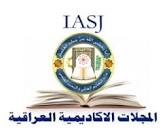Detection of Parasitic Contamination of Cress Crop Irrigated with Two Types of Water in Jumka Village, Erbil – Iraq
Abstract
This study aims to evaluate the risk of using untreated wastewater for vegetable contamination. Water samples and vegetables cress and scientific name (Lepidium sativum) were collected from farms using wastewater and well water for irrigation for three seasons (Autumn, Winter, and Spring). Results show that untreated wastewater is characterized by an alkaline side of neutrality and has a high content of the Biochemical Oxygen Demand BOD5 value of 124 mg. l-1. The Biochemical Oxygen Demand (BOD5) values variations coincided with water temperature variations and no Dissolved Oxygen (DO) detection during the study periods. Cryptosporidium spp. and other intestinal parasites were observed in wastewater in nearly all studied seasons. Wastewater-contaminated vegetables irrigated by it. Well, water is characterized by the highest EC value of 1119 S.cm-1 during Winter and the highest pH value of 8.1 during the Spring season. Generally, well water is contaminated with parasitic organisms. Cryptosporidium spp. was detected in well water but no detection was found in cress irrigated by it.




